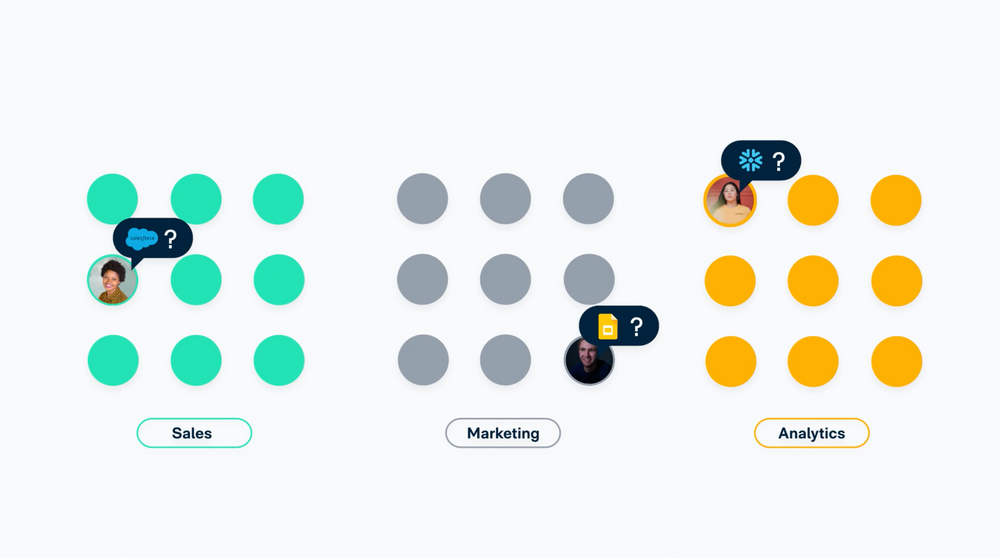Join Our Newsletter
Best Practices for Collaborating and Updating Sales Templates
We constantly get asked this question here at Matik...
"Now that I’ve built my templates and narratives, what’s the best practice for updating them? How do I collaborate with my team to make it happen?"
Building successful narratives is just like building successful software - it’s highly iterative. As your business grows and matures, so, too, should the narratives you share with prospects and customers.
Check out our tips on how to successfully build feedback loops to ensure that your templates are resonating with your customers.
Step 1: Talk to your frontlines
First things first, don’t iterate in the dark!
A lot of the time, the person who creates the data-driven narratives is in product marketing, sales ops, or enablement (let’s call them the Admin).
This person is often different from the person who actually presents the templates to customers, such as an AE or CSM (we’ll call them the End User).
If you’re an Admin, it’s imperative to establish an open line of communication with your End Users.
Start by creating a Slack channel to give End Users a dedicated place to share what they love about the existing templates and what they’d like to see changed.
You may also want to set up a regular check-in with your reps to learn how your data points and stories are landing with customers and prospects over time.
Step 2: Go straight to the source
Nothing is better or more informative than seeing firsthand how a customer responds to the templates you’ve created.
Ask your End Users to record customer calls in Gong, Chorus, or another similar tool, and block out time on your calendar to review these conversations regularly.
You’ll hear directly from your customers if your templates are effectively providing value, or if they’re falling flat and it’s time to make a change.
Step 3: Make a plan
Now that you’ve collected feedback and made a list of revisions for your narratives, what should you tackle first?
We recommend categorizing your changes into T-shirt sizes for impact: Small, Medium and Large.
Small changes are ones that you should make frequently, so long as they don’t require additional training for your End Users.
Medium changes should be planned out for the near future. Pull in your enablement or ops team to support the rollout of new data points, or the training of End Users on how to present a new narrative.
Large changes are like Medium changes with a longer timeline. Invest in creating a roadmap for these in advance, setting smaller goals to achieve week-over-week that keep the extended project on task and moving toward your end goal.
Step 4: Iterate!
If you’ve taken into account both End User and customer feedback, and made a solid plan for change deployment, then you’re ready to take action! The feedback loops you’ve just built will ensure that the changes you’re making are informed, and will also allow you to keep incorporating rep and customer opinions in your future template revisions.
You may also choose to implement some tracking systems for templates to add more quantitative data to the mix. For example, you could ask End Users to start logging the presentations they’re sharing with customers under the respective account in your company’s CRM.
This will allow you to see which narratives are being shared most often with customers (Is it Business Reviews? Onboarding decks? Pricing proposals?), and also which customers are receiving more content than others.
Compare all of that to account renewals and even upsells, and you’ll start to form a correlative picture of how your narratives are influencing your customer relationships, and how you can leverage these narratives to impact business outcomes.
---
Curious about how Matik can help your business manage this process? Request a Demo















